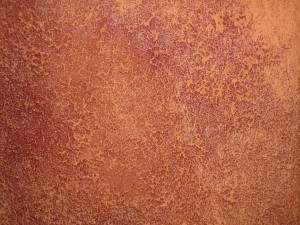 Bacteria and viruses have ruled our lives lately.
Bacteria and viruses have ruled our lives lately.
First there was the Ebola epidemic.
Then came the measles outbreak.
Most recently, we’ve seen an escalating number of deadly hospital-acquired infections among patients exposed to CRE (carbapenem-resistant Enterobacteriaceae) bacteria.
And to top it all off, we’re still in the midst of flu season.
Protecting patients from all these risks is certainly an uphill battle. Aside from implementing best practices like regular hand washing and disinfecting, it seems like there’s only so much we can do.
But there are other parts of the infection control equation that hospitals can control, like choosing the right surfaces.
The CRE Outbreak Reminded Us That Hospital Surfaces Matter
In the case of the CRE outbreak, it’s clear that the hard-to-clean nature of the medical scopes was the major contributing factor to the infections. Even though hospital staff cleaned the scopes according to the manufacturer’s instructions, the scopes’ construction and material made it very difficult to eliminate all the harmful bacteria.
This case has taught us that sometimes it’s not just how often we wash and disinfect that matters. In some cases, it’s the actual materials that make the difference.
The difference between a clean environment and an outbreak of hospital-acquired infections, that is.
What Surfaces are Best for Infection Control?
We’ve learned that when it comes to protecting patients, sometimes even tried-and-true cleaning procedures can’t always get the job done. That’s why choosing the right surfaces and finishes can help play a critical role in controlling the spread of bacteria.
Here are some tips for choosing the best infection control surfaces for your healthcare facility:
Easy-to-Clean Materials
The single most important thing you can do when choosing your surfaces and finishes is to make sure they are easy to clean. As we pointed out in the CRE infections example above, this was the major contributing factor in the spread of the harmful bacteria between patients.
Some surfaces have obvious infection control benefits over others. For example, hard flooring would be the natural choice for patient areas over carpeting because they are much easier to clean and maintain than carpeting.
Choosing edge and seam-free surfaces can also help reduce the amount of bacteria trapped on surfaces.
Studies have shown that many hospital surfaces are not cleaned properly or have unacceptable levels of bacteria, so any measures that make it easier to clean these surfaces can help prevent the spread of bacteria.
Copper Surfaces

Copper and textured surfaces help control bacteria in hospitals. Source: Flickr, License
Copper has emerged as a natural bacteria-fighting surface, especially against drug-resistant bacteria like MRSA and CRE.
When bacteria come in contact with copper, ions from the copper surface break down the bacteria’s cell walls. Copper ions then enter the cells and bind to enzymes that block the cells’ metabolic processes until they can no longer function and the bacteria dies.
In one clinical trial, researchers found that using copper surfaces in intensive care unit (ICU) rooms resulted in a 97 percent reduction of HAI-causing bacteria, as well as 40 percent reduced risk of acquiring a HAI. (source)
While copper cannot eliminate all bacteria on it’s own, its effectiveness against antibiotic-resistant bacteria makes it a valuable tool in the infection control battle.
Textured Surfaces
Studies for a new material called Sharklet have shown that textured surfaces may also help prevent the spread of bacteria. According to a Live Science article, the texture of this material mimics sharkskin with microscopic ridges and groves that help prevent bacteria from attaching to the surface. While the material does not kill bacteria, it can help reduced the amount of bacteria left on surfaces after contact.
In a study of the Sharklet material, bacteria was applied to several surfaces with both a paint sprayer and direct contact. When tested for bacterial contamination, the Sharklet texture had 94 percent less bacteria than the smooth surface that was tested.
It was noted by one researcher that while antimicrobial products contain pesticides, the Sharklet material “doesn’t introduce new materials or coatings – it simply alters the shape and texture of existing materials to create surface properties that are unfavorable for bacterial contamination”.
Antimicrobial products won’t cut it
When you’re evaluating surfaces for a hospital setting, be wary of antimicrobial-coated products that claim to have bacteria-fighting powers.
Here’s what you need to know about antimicrobial products:
- According to the Environmental Protection Agency (EPA), antimicrobial pesticides are used to “disinfect, sanitize, reduce or mitigate growth or development of microbiological organisms”.
- Just like other pesticides, antimicrobial pesticides are chemicals regulated by the EPA that may have unintended effects on patient health.
- The Centers for Disease Control and Prevention (CDC) states that no evidence has been found to suggest that antimicrobials have any real health benefits when used in hospital settings.
- The EPA has raised concerns that products labeled as antimicrobial can actually make infection control problems worse because many people assume that these products are self-sanitizing and do not need to be cleaned as often.
Questions?
Please contact us with any questions or concerns. We would love to discuss any issues or questions you may have concerning your facility.



